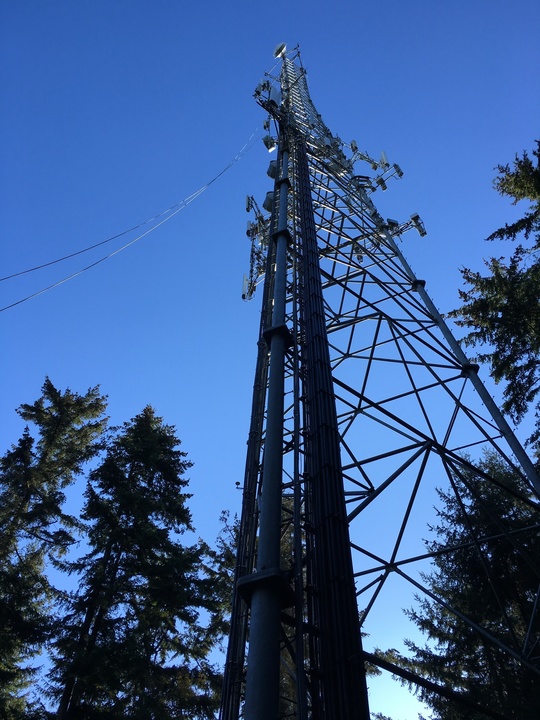
PSERN Project Construction Happening Now!
As many of you know by now construction for the PSERN
project has begun!
Due to the fact that we are now in fall/winter season,
construction crews are working fast and furious at the radio sites to get work
completed. I mentioned before that there are 9 out of the 52 total sites slated
for construction in the next few months—Crista, Federal Way, East Tiger, King
Lake, Squak, Top Hat, Rattlesnake, Tinkham and West Tiger.
We recently completed work at the Federal Way site and
nearing completion Crista. Most of the work at these initial sites is
electrical work including the next site up for construction Top Hat. Then we
will start working on sites that need new towers or tower upgrades.
With so much work to do on the project we will be continuing
procurements for various phases of the project. We are close to solidifying our
second general contractor and we are currently working on the Invitation to Bid
(ITB) for a third general contractor.
After much anticipation and a lot of hard work we are proud
to finally get things moving on the project. On such a large complex project
there are many moving parts so it’s imperative that everything and everyone involved
are succinct. Thankfully we have a very dedicated project team and partners who
are helping to ensure that happens.
Thank you for your continued support.
|
- David Mendel, PSERN Project Director
|
|
 |
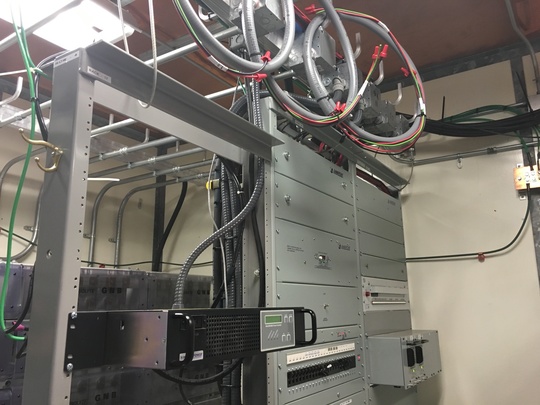 A look at the spot where new equipment will go in the shelter at Crista! Photo Credit: John Wright
You may think that this project is just about the towers. But actually work can vary from site to site. Some of the sites will only need electrical work done such as the Federal Way and Crista sites. Construction crews spent about 2-3 weeks recently installing grounding which runs from the towers to the equipment in the shelter. This grounding is critical for protecting equipment during lightning storms.
Also critical to the sites is a good cooling system even during the winter months. The equipment is working all the time non-stop so it needs to stay cool in order to run properly and not overheat. Sites will receive new air conditioning units and HVAC equipment to ensure overheating isn't an issue.
During inclement weather, ice shields are also important for each site. They protect equipment and personnel from falling ice during winter storms.
There will be tower work that needs to be done to some of the upcoming sites so stay tuned for pics and info to come!
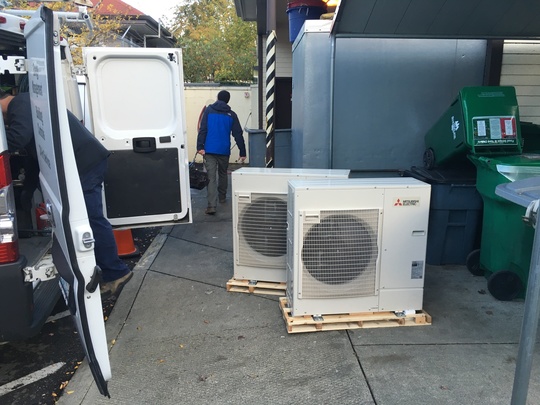 A look at the new air condition units for Crista! Photo Credit: John Wright
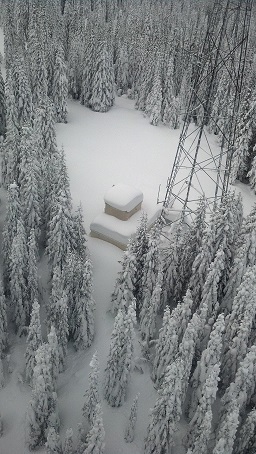 You can see how trecherous snow and ice can be at the mountain sites! This is a view of Sobieski taken from a helicopter! Photo Credit: Sean Douglas
 New PSERN team member Young Jang strikes a pose under the PSERN sign! Photo Credit: Karla Clark
Meet PSERN's newest team member Young Jang!
Young recently graduated from University of Washington-Bothell, where
she earned a Bachelors Degree in Science, Technology and Society. Prior to coming to King County, she worked many years
in her family's restaurant in several roles, but most recently as the
manager.
Young brings a wealth of fresh new ideas and will be helping on all facets of the project providing administrative support. We are very excited to have her on the team. Welcome, Young!
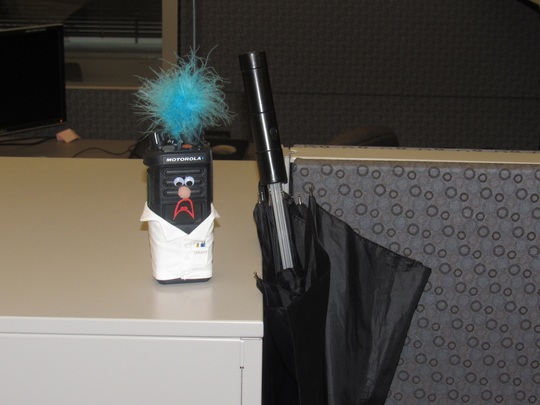 Sparky braved the rainy weather to make sure he provided his segment for the newsletter! Photo Credit: Karla Clark
Last month we talked about the Land Mobile Radio System and
some of its features. This month I want to tell you about our backhaul
network. It’s a hybrid system, meaning part of the network relies on
Point to Point Microwave and some of it relies on Fiber Optics.
Aviat Networks is providing a redundant high availability
Point to Point Microwave system in the 6 GHz and 10/11 GHz bands. The system
will be capable of providing anywhere from 45 Mbps to 180 Mbps throughput with
as much as +39dBm of power if it’s needed. And for you security types, it
is FIPS 140-2 Level 2 NIST and
FIPS 197 validated – up to 256-bit AES encryption validated. These Microwave radios are capable of being used in all-TDM, hybrid TDM+IP, or all-IP
transport.
The Fiber Optic
network is a combination of King County, Seattle, and the Community
Connectivity Consortium owned fiber links. This fiber links will be used
at a number of dispatch locations and 911 centers and will allow the
Dispatchers to communicate with their field units.
All of this
backhaul transport will be managed and provisioned with our Nokia Multiprotocol Label Switching (MPLS) system to ensure maximum uptime,
performance and connectivity. I gotta jet. I have C-Pipe’s, VLAN’s and
LSP’s to work on. Until next time my fellow geeks!
- Sparky
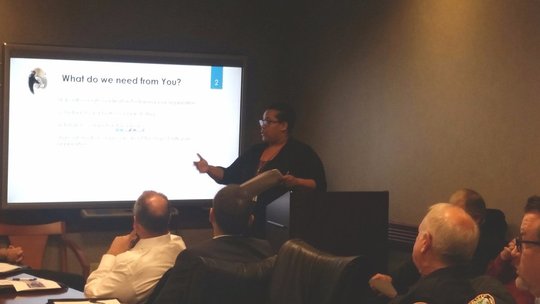 PSERN Project Manager Dijana Steward talks about upcoming events to the ValleyCom Operations Board.
Coming to a location near you! The PSERN outreach team will be making the rounds spreading the news about the project to user groups. Talks will include information on new system features, new radios, project schedule, coverage and much more!
If your organization is a user on our system and you would like us to come talk to your group please contact PSERN Communications Manager Karla Clark at karla.clark@kingcounty.gov
 |
|
Did You Know?
Most of the microwave radios in the new network use a 1 watt
transmitter. That's 1/60 of the power used by old light bulbs!
|
|